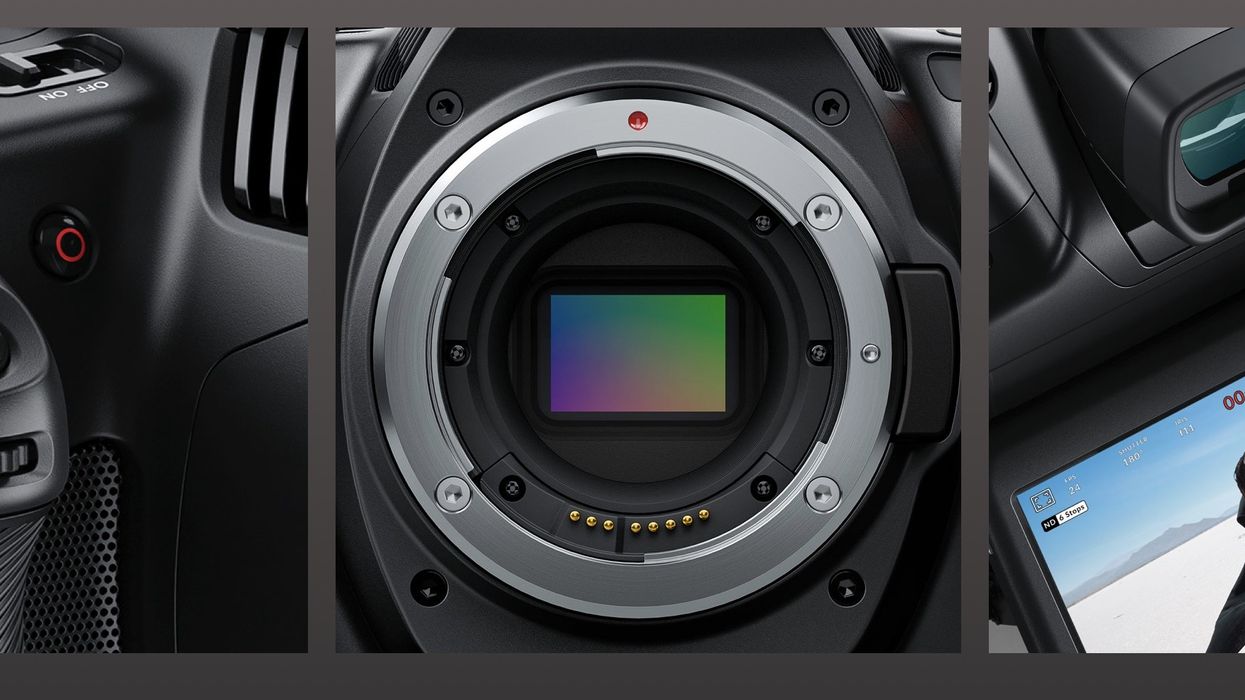Can You Fix the Rolling Shutter on the Blackmagic Pocket?
Yeah, you kinda can. But there are a few limitations you need to consider.
Modern cinema cameras have evolved in leaps and bounds over the past few years. Even in the last year, new releases in the mirrorless world have come out with incredible dynamic range and professional features for a price that almost anyone can afford.
And Blackmagic Pocket Cinema Cameras have always led the charge when affordability and image quality were paramount. However, some creators have struggled with the rolling shutter those sensors have produced. It's just an issue we all have to deal with, right?
Well, actually, probably not. Thanks to the gyros built into all modern Pocket cameras, a few tweaks in post can almost eliminate rolling shutter effects altogether.
But it comes with a few caveats.
Rolling Shutter Be Gone!
There has been a quiet buzz on the web lately after the YouTube channel Diode Films posted a video about a DaVinci Resolve workflow that uses the BMPCC gyro to drastically reduce rolling shutter.
For those who don't know what a rolling shutter is and what effect it has on your footage, it is a by-product of a CMOS sensor. The pixel rows at the top and bottom are activated at different times, leading to a difference in what image each row produces. When you pan the camera from side to side too fast, the image appears slanted.
This is just a sacrifice of the tech we currently have to deal with, and all CMOS cameras have this issue, even an ARRI Alexa 35. More expensive cameras have a higher readout speed to reduce this timing difference, but more affordable options, unfortunately, can't be that fast. However, there are exceptions, such as the Sony FX3.
For the BMPCC cameras, creatives can use the stabilize tool within DaVinci Resolve and the gyro data from the camera to "stabilize" the wobbly frame with minimal loss in focal length.
The process is relatively simple. If you have a lens that shares data via the electronic pins, you can just shoot your shot and pull your footage into DaVinci Resolve.
However, if you're shooting with vintage glass, be sure to input your focal length into the camera setting before hitting record.

All the BMD Pocket cameras have a gyro.
Credit: Blackmagic Design
When you have all your footage in a timeline, go to the Color Tab in DaVinci Resolve and head to the Tracker/Stabilizer view. From there, in the bottom left-hand of the window, choose Camera Gyro from the drop-down menu. It's usually set to Perspective.
The crucial part is setting your strength to zero before clicking stabilize.
This won't stabilize the footage but still reduce the rolling shutter effect. It'll zoom in on the footage to cover up all the corrections, but if your rolling shutter effect isn't too heavy, it'll look like you shot on a camera with a global shutter.

What your footage looks like when corrected and not cropped.
The Pockets Saving Grace?
Rolling Shutter feels like an afterthought now, at least to us. While it does add a few extra steps to your workflow, both in production (if you're using dummy lenses) and in post, it feels like a small price to pay for rock-solid footage.
Having said all that, it won't completely remove your rolling shutter wobble, especially if you're snapping the camera around like you're stuck in an earthquake. In addition, it won't correct rolling shutter effects that are caused by moving objects, such as shooting from a moving car. It only covers what the camera can sense.
But for everything else, it's a nice technique to have in your toolkit. And for cameras as amazing as the Pockets, it's an absolute game changer.


 'Aliens'CREDIT: 20th Century Fox
'Aliens'CREDIT: 20th Century Fox
 'Promising Young Woman'CREDIT: FilmNation
'Promising Young Woman'CREDIT: FilmNation









